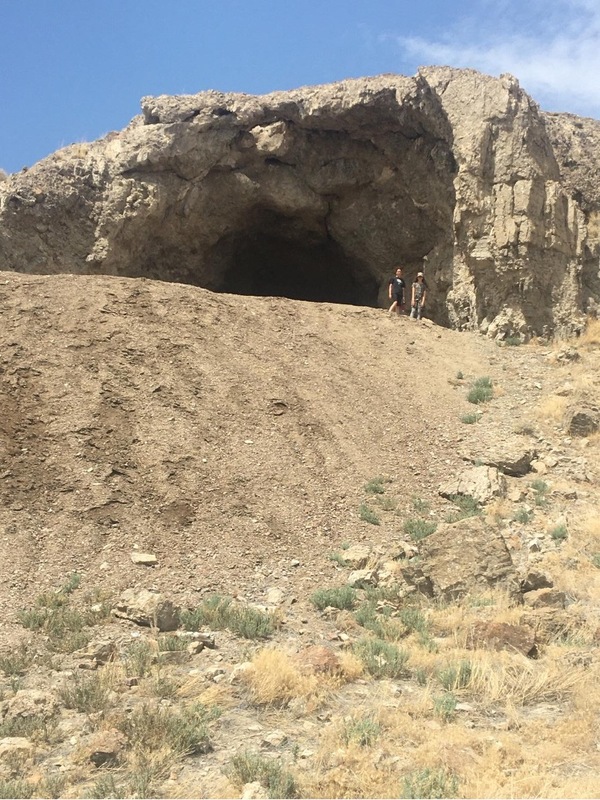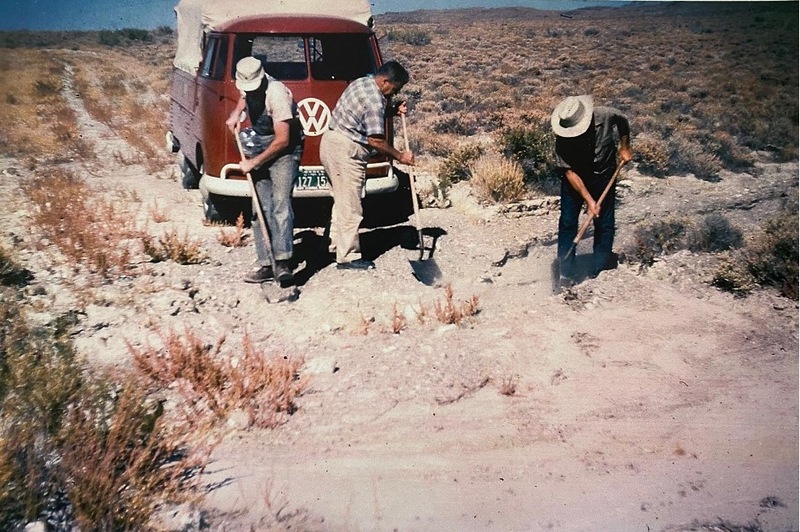Hogup Cave

Hogup Cave provided shelter for people who hunted and gathered in the surrounding area as part of a cyclical migration. The findings at the cave provide a small glimpse of a complex and enduring culture that lasted for thousands of years.
Somewhat overshadowed by the more well-known Danger Cave, Hogup Cave provides some of the same enigmas presented by Danger Cave, such as the struggle for life in the harsh environment. Excavated by Dr. C. Melvin Aikens of the University of Utah in 1967 and 1968, the archeological evidence recovered from the cave—dating back as far as 6,000 BCE—shows a desert culture in line with Native peoples of the time. Starch granules found on artifacts show the use of small scale gathering, and a prevalence of projectile points show the importance of hunting, with bighorn sheep and pronghorns acting as the prey. Both findings suggest a nomadic people who used the cave periodically while hunting on the surrounding land. The cave came to be used cross-culturally, as is seen in the evidence for the replacement (rather than assimilation) of Fremont peoples by Numic speaking groups. Fremont artifacts do not continue past Unit III (400–1350 CE), and Numic artifacts start to appear in Unit IV (1350–1850 CE).
Because the history of the cave extends back to 6000 BCE, it was an important find for understanding the ancient desert cultures put forth by Jesse Jennings in his excavation of Danger Cave, an archaeological dig site about 65 miles away from Hogup Cave. Hogup Cave provides more evidence supporting Jennings’s challenge to Ernest Antevs’ theory of widespread drought during the time of its occupation, showing how discoveries such as the one at Hogup also inspire questions relating to cultural ecology, asking to what extent environment impacts these cultures.
Not much information is available about the caves aside from the excavation done by the University of Utah and the writeups done by project supervisor C. Melvin Aikens. Such writings make up the bulk of the scholarly work, and artifacts from the excavation can be found at the university’s Museum of Natural History. But the discovery of the cave itself remains somewhat a mystery. Local folklore and oral histories point to Orval Evans discovering the cave in the 1930s, while the University of Utah eventually learned about Hogup Cave by hearing about subsequent expeditions. This story reflects the accidentalism and amateur archeological enthusiasm that sometimes surrounds archeological discovery in Utah.
Images


